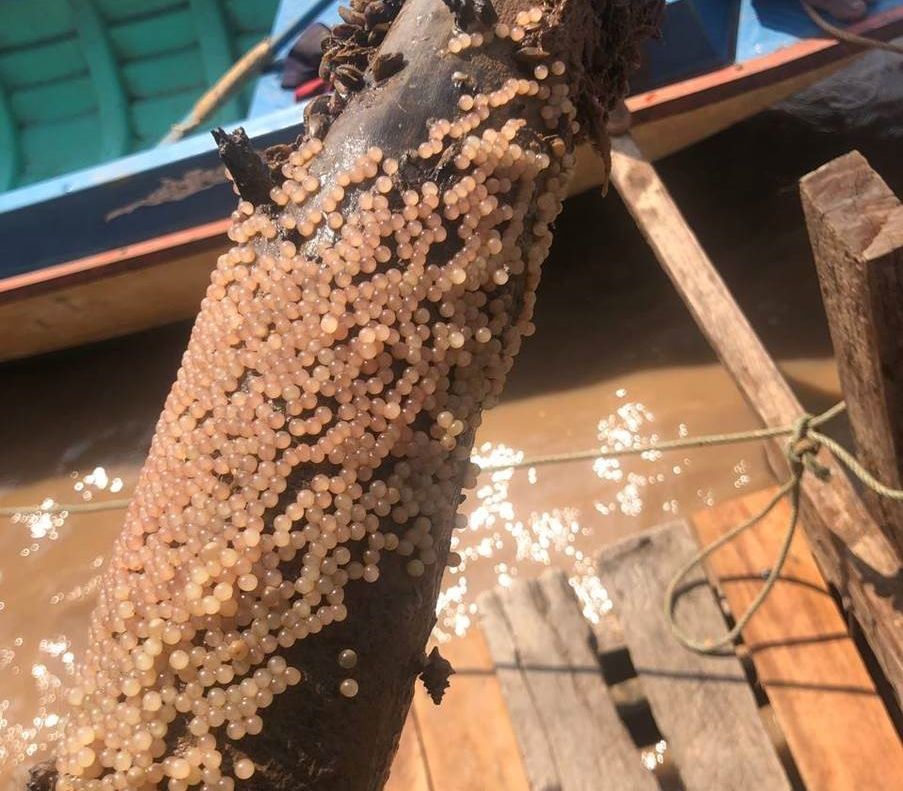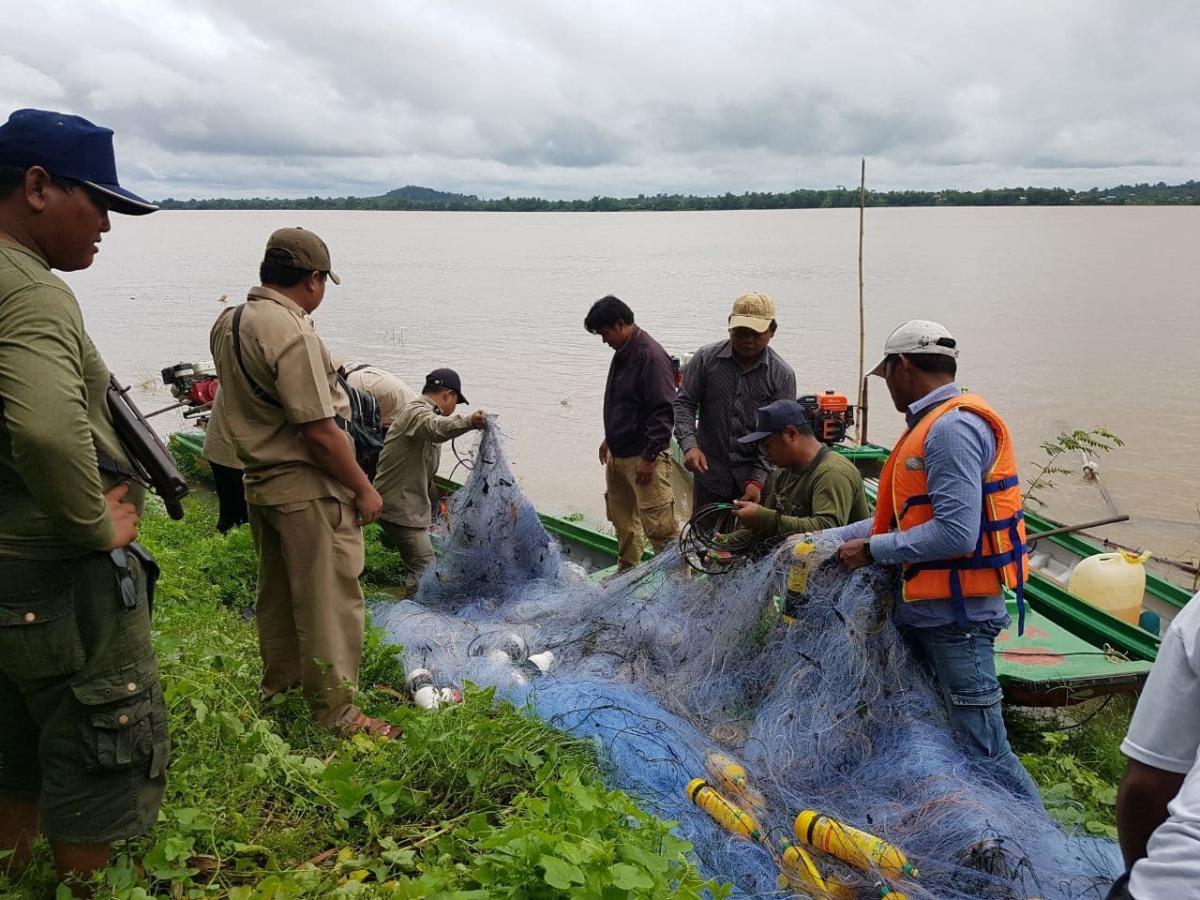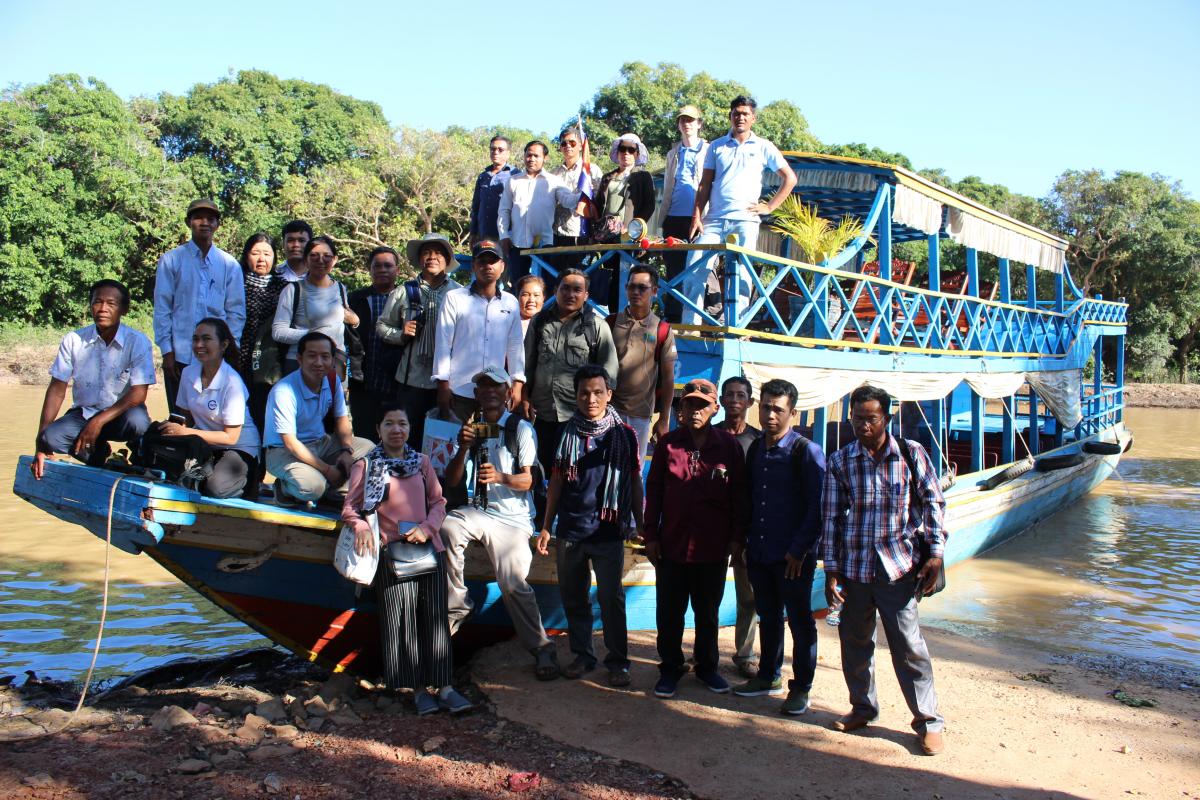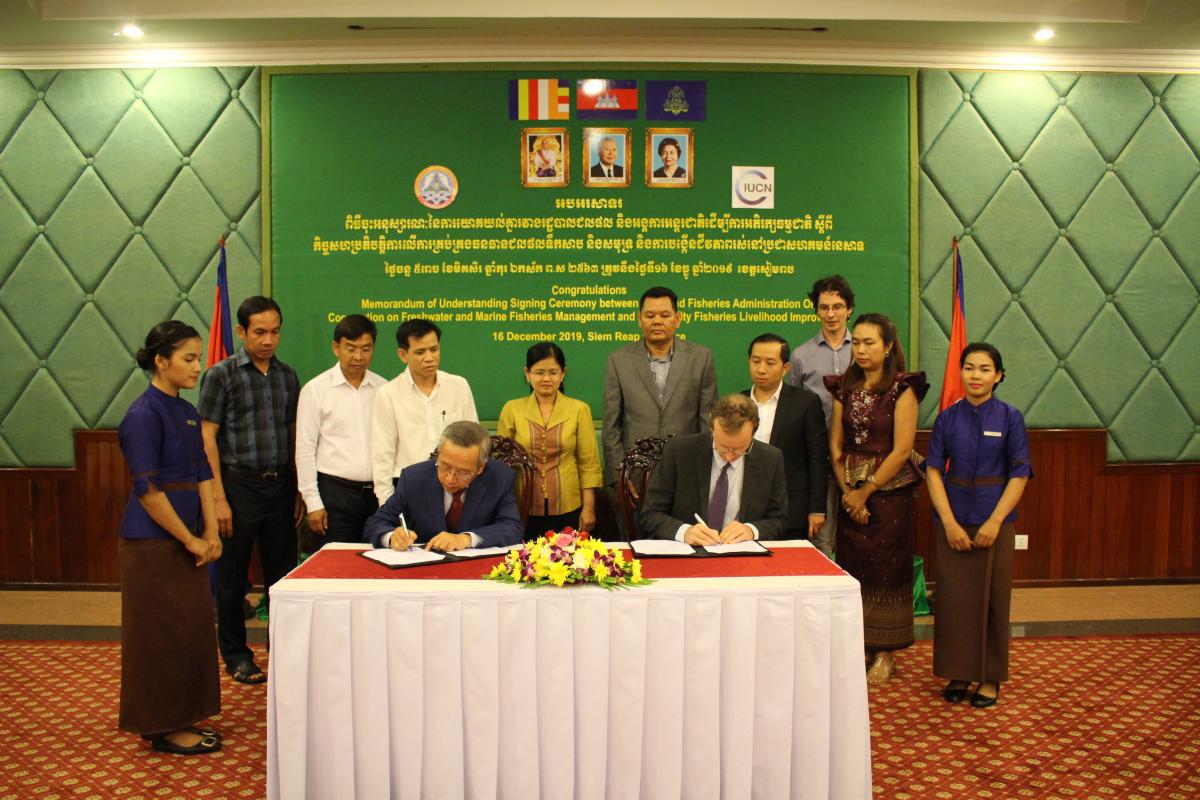Fish conservation areas in the Tonle Sap Lake: 10 years on
In 2014-2015, as part of an EU project, IUCN and local NGO Fisheries Action Coalition Team (FACT) established three fish conservation areas (FCAs) in the Tonle Sap: in Phlov Touk near the Stung Sen Ramsar Site in Kampong Chhnang; in Balot in the Boeung Tonle Chhmar Ramsar Site in Kampong Thom; and in Kampong Phluk, a 30-minute drive from Siem Reap.
The establishment of FCAs was a response to the sudden abolition in 2012 of the private fishing lots that had historically controlled fishing in the Tonle Sap, a decision that risked triggering a “tragedy of the commons” outcome in the absence of improved fisheries management.
These FCAs were small but strategically located to protect key fish habitats where broodstock (or “mother fish”) congregate in the dry season when the lake level declines dramatically as part of the Mekong flood pulse. The decision to use FCAs rather than gear restrictions or quotas was because FCAs are simple to design, monitor, and enforce.
After these FCAs were established, we put $5,000 into a LOLC bank account and signed an agreement with each community fisheries management committee that lets them draw the interest of $35/month to pay for about half the total cost of FCA management. We call these mini-trust funds (MTFs).
The decision to combine FCAs and MTFs was based on our analysis that providing a modest but stable income would sustain effective FCA management, which would in turn boost the self-confidence and capacity of the management and increase membership (and income), which would in turn strengthen FCA management: a virtuous circle.
Since 2016, we have monitored management committee performance and have observed continued protection of the FCAs, increased fish stocks (and larger diversity of species), and a high degree of financial diversification as the MTF yield has been used to leverage funding from other sources. A degree of financial autonomy is arguably a precondition for broader-based development.
 Photo: Ocellated Featherback (Chitala ornata) laid eggs at the wooden FAD in Kampong Phluk FCA in Siem Reap © IUCN Cambodia
Photo: Ocellated Featherback (Chitala ornata) laid eggs at the wooden FAD in Kampong Phluk FCA in Siem Reap © IUCN Cambodia
In November 2023, almost 10 years after we established them, an IUCN team visited two of the three FCAs in the Tonle Sap. The first stop was a 920-hectare FCA that FACT established in Phat Sanday in former fishing lot 2. This FCA is made up of five channels with 10 deep pools. (Deep is a relative term in the Tonle Sap: even in the flood season they are only 6 m deep.)
In Phat Sanday, fishers report that since the FCA was established in 2019, fish stocks have increased from 15 to 75 tons and fish catch from 11 to 18 kg/household/day. We could believe it: when we visited in March 2023, there were huge numbers of birds feasting on an abundance of fish. When we asked how fishers knew that fish stocks had increased so much, we were told that they could feel the mother fish with their oars, a wonderful example of local environmental knowledge. We also heard that the FCA was unaffected by the prolonged drought that hit the region in 2020, suggesting that FCAs buffer fishing communities from record low water levels. Patrolling the FCA by the 8-person team during the February-July season when water levels are low and illegal fishing is high costs $190/month.
Balot is much more remote and 95% of the population depends on fishing. In 2022, the FCA was expanded from 8 to 12 hectares to connect the deep-water channel to the surrounding forest. Fishers report that catch has increased from 25 to 75 kg/household/day during peak fishing in November-December and that they eat, sell, and process more fish. The biggest problem they face is that Balot only has a primary school. For high school, kids need to move to Stoung, the district capital and this is only possible if families have relatives there. As a result, most kids don’t get educated beyond grade 6.
When asked what they would like their children to become, they said teachers or nurses, not fishers. This raises the question of whether we should support families who wish to voluntarily exit the fishing sector. There may simply be too many fishers for fishing in the Tonle Sap ever to be sustainable. It’s the same story with marine fishing in Viet Nam.
Kampong Phluk is a large and wealthy fishing community that benefits from a flow of tourists from Siem Reap who visit the lake and flooded forest by boat. Only 65% of the population depends on fishing. The 200-hectare FCA was part of former fishing lot 4. Fishers report that the FCA is regularly patrolled and that not only have fish stocks and catch increased but long-gone species have reappeared.
While the answers to our questions should be treated with some caution, the consistency in response is striking when it comes to the impact of the FCAs on fish stocks. These findings are not unique: Conservation International has implemented a similar model and achieved similar success. The key policy message is that the FCA/MTF model is highly cost-effective and should be scaled up. Of the 261 community fisheries committees in the Tonle Sap, only about 10% are considered fully operational. There’s huge room for improvement in terms of community-based fisheries management.






